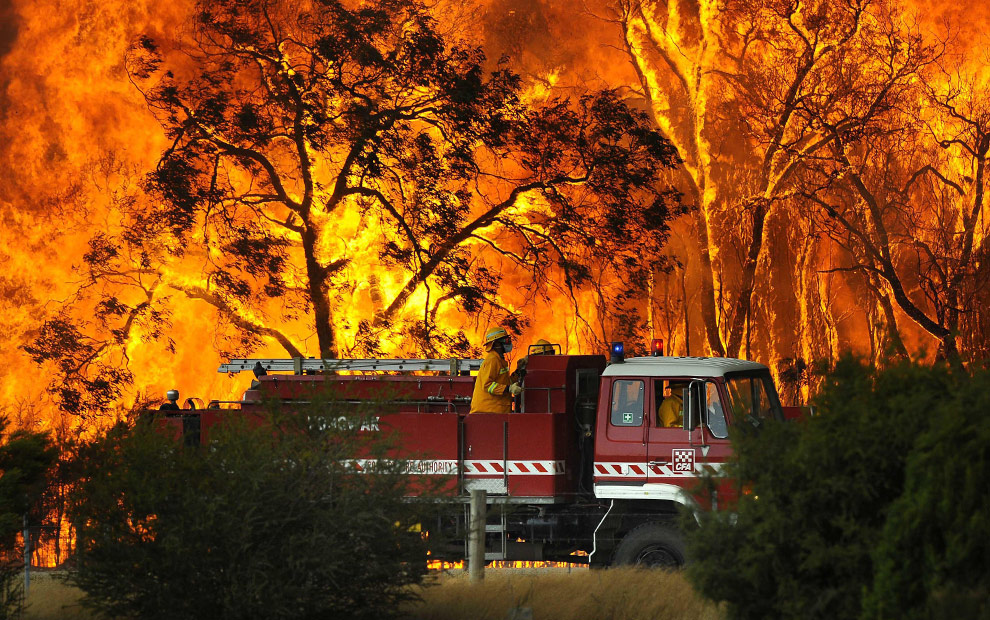By David Rothfield.
It hardly got media coverage but, yes, they said it. Those gathered for the U.S. Democratic Party Convention last July declared that they could not to wait for others “…to lead the world in combating the climate emergency” (my emphasis). The closing declaration of the Convention went on to say that “… our generation (must) now lead a World War II-type national mobilization to save civilization from catastrophic consequences.”
If Hillary Clinton wins the Presidency, then, in the words of the Declaration, “within the first 100 days of the next administration, the President will convene a summit of the world’s best engineers, climate scientists, climate experts, policy experts, activists and indigenous communities to chart a course toward the healthy future we all want for our families and communities.”
This must be the first time that the term ‘emergency’ has been embraced by any major political party in relation to the climate crisis. It has taken some ground-shaking climate events, as well as a measure of success on the part of the global climate movement to bring about this new dynamic.
The year 2014 had the distinction of being declared the hottest year, globally, on record. The record didn’t last long because, in short succession, 2015 beat that record and now, based on weather records of the first 8 months of 2016, this year is set to be declared hotter than the previous 2 ‘hottest’ years. For the first time, NASA has published a ‘mid-year’ climate analysis, in which they reported that each month so far, this year, “has been the warmest respective month globally, in the modern temperature record” which dates back to 1880.
The added energy in the global climate system has been causing record-breaking storms and cyclone damage around the globe, most notably in our back yard, in the western pacific. There have been record-breaking heat waves and drought events across the Indian sub-continent, with temperatures in the 50s for days on end. Similarly, record-breaking droughts, accompanied by widespread crop loss and starvation have swept across Southern and Eastern Africa as well as Central America and South-East Asia where Vietnam and Papua New Guinea have been particularly affected.
Warm pacific temperatures have been killing the Great Barrier Reef with a record-breaking bleaching event, affecting 93% of the reef.

These warm temperatures have been leaving their mark in the Arctic too, which has experienced increased melting of ice cover for over a decade. The ice cover, this northern summer, was 40% less than the prevailing average cover of the 70s and early 80s.
Reduced ice cover has flow-on warming effects due to the albedo phenomenon, the changing reflectivity of the earth’s surface. Heat reflective white surfaces, are being replaced by heat absorbing blue, brown and even green surfaces across the Arctic. This amplifies and accelerates the global warming trend.
To cap off the reasons why politicians should be worried, there is new evidence that global warming is having a greater toll on Antarctic ice cover than previously thought. New studies have revised estimates of sea level rise this century with the Antarctic alone potentially adding 1 m. to previous estimates. The latest estimates of sea-level rise are up to 2 m. within the lifetime of many of our grandchildren.
The Paris Climate Conference has been hailed as a success, though that depends on what your measure of success is. If all signatories to the Agreement fulfill the commitments they brought to Paris, we may succeed to reduce a predicted catastrophic temperature rise of 4° C to a disastrous 3° C, still well short of the aim of 1.5° C to 2.0° C.

But is even 1.5° C, average increase safe? Such an increase will kill the entire Barrier Reef. By the end of this century, it will cause what today is still regarded as a 1:100-year storm event to become a frequent event every year along Australia’s eastern seaboard. Such events leave hundreds of thousands without power and have many thousands
evacuated from their homes. In Victoria, events such as the 2009 bush fires will become frequent. In Melbourne we will experience sea-level rise of possibly 2 m, sufficient, with added storm surge to flood Docklands, large parts of South Melbourne, Albert Park and Elwood, as well as beach fronts all along the Mornington Peninsula. As Prof. David Karoly, climate scientist from the University of Melbourne says, “Our climate is not safe now, so what does dangerous climate change mean?”
The U.S. will not be alone if it adopts an emergency climate change mobilisation program. China is already making rapid strides to bring its carbon emissions under control and achieve its ambitious emissions reduction targets, an expanding economy notwithstanding. India is not far behind.
Australia is still committed to a policy based on keeping our coal industry in business and expanding coal exports. That both China and India are rapidly phasing out coal imports has not yet registered.
The environment movement meanwhile is mobilizing to declare 2017, the year for declaring a global climate emergency. It will centre around a declaration for which mass support is to be sort. That declaration can be found here.
Sources:
https://www.theguardian.com/global-development/2016/jul/26/southern-africa-appeals-for-billions-el-nino-devastation-drought
http://www.livescience.com/55469-2016-could-be-hottest-year-on-record.html
http://www.scientificamerican.com/article/antarctica-meltdown-could-double-sea-level-rise/
This post is part of Just Voices #11 – Climate Change.
